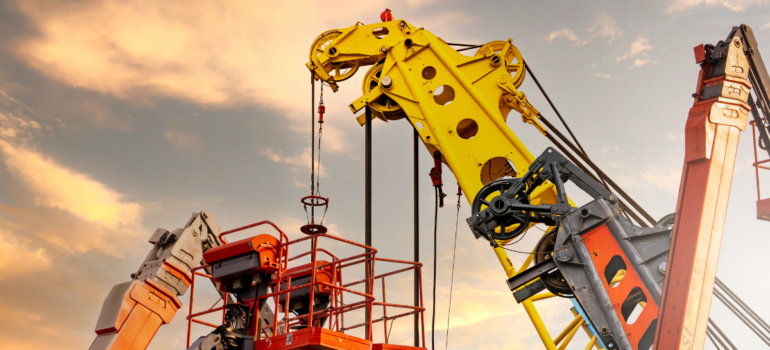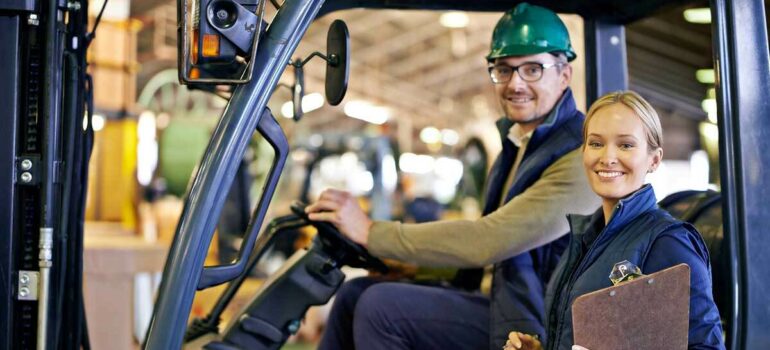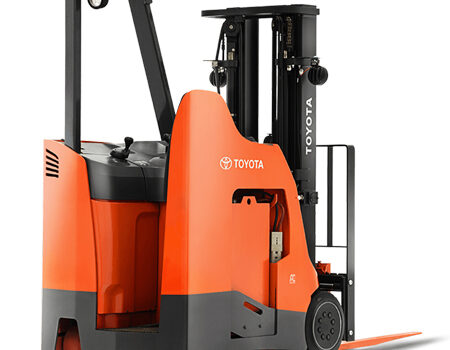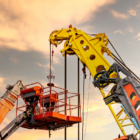Scissor Lift Training Courses in Toronto | Expert Guidance & Hands-On Learning
In the bustling metropolis of Toronto, where industries thrive and construction projects reach new heights, the demand for skilled professionals trained in operating scissor lifts has never been higher. Safety is paramount when working at elevated heights, and the importance of proper training cannot be overstated. If you are on the lookout for scissor lift training courses in Toronto, look no further. Our team at Forklift Training Toronto is dedicated to providing expert guidance and comprehensive training to ensure that individuals are well-prepared to operate scissor lifts safely and efficiently.
Why Scissor Lift Training Matters:
Scissor lifts, with their extendable platforms, are essential tools in various industries, including construction, maintenance, and warehouse operations. However, operating these machines without proper training can pose serious risks to both the operator and those working in the vicinity. Accidents, injuries, and damage to property are potential consequences of inadequate training.
Investing in scissor lift training is not just a legal requirement but a crucial step toward creating a secure work environment. Our comprehensive courses cover the fundamentals of scissor lift operation, safety protocols, and emergency procedures. We equip participants with the knowledge and skills needed to navigate potential hazards, making them confident and responsible operators.
Key Features of Our Scissor Lift Training Courses:
- Expert Instructors: Our scissor lift training courses in Toronto are led by experienced and certified instructors who are well-versed in the latest industry standards. They provide hands-on guidance, ensuring that participants understand the intricacies of scissor lift operation and safety.
- Comprehensive Curriculum: Our courses cover a wide range of topics, including scissor lift components and controls, pre-operation inspections, proper use of personal protective equipment (PPE), load capacity considerations, and emergency response procedures. We emphasize both theoretical knowledge and practical skills to prepare operators for real-world scenarios.
- Hands-On Training: We believe in learning by doing. Our courses include practical, hands-on training sessions where participants have the opportunity to operate scissor lifts in a controlled environment. This hands-on experience enhances their confidence and ensures they are well-prepared for the challenges of the job.
- Customized Training Programs: We understand that different industries have unique requirements. Our scissor lift training courses can be customized to address the specific needs of your workplace. Whether you are in construction, manufacturing, or warehouse operations, we tailor our training to suit your industry’s demands.
- Certification and Compliance: Upon successful completion of our scissor lift training program, participants receive a certification that attests to their competence in operating scissor lifts. This certification not only enhances their employability but also ensures that your workplace remains compliant with safety regulations.
Why Choose Forklift Training Toronto?
- Proven Track Record: With years of experience in providing forklift and other equipment training, Forklift Training Toronto has a proven record of accomplishment in delivering high-quality, effective training programs. Our satisfied clients attest to the excellence of our services.
- State-of-the-Art Facilities: Our training facilities are equipped with the latest scissor lift models, ensuring that participants train on equipment that reflects industry standards. We prioritize creating a realistic training environment that mimics the conditions operators will face on the job.
- Flexible Scheduling: We understand the demands of a busy workforce. Our flexible scheduling options allow participants to choose training times that fit into their work and personal commitments. We offer both weekday and weekend courses to accommodate diverse schedules.
Building a Safer Workplace: The Forklift Training Toronto Advantage
In the ever-evolving landscape of workplace safety, our commitment goes beyond merely meeting regulatory standards. We strive to instill a culture of safety consciousness among participants, fostering a mindset that prioritizes the well-being of themselves and those around them. Our instructors not only impart technical knowledge but also share real-world insights and best practices, enriching the learning experience.
At Forklift Training Toronto, we believe that ongoing education is the key to excellence. Beyond the initial scissor lift training courses, we offer refresher courses and updates to keep operators abreast of the latest advancements in equipment technology and safety protocols. This ensures that our participants remain at the forefront of their field, continually enhancing their skills to adapt to the dynamic nature of the industries they serve.
Safety is a collective effort, and our training programs extend beyond individual operators. We also provide tailored sessions for supervisors and managers, empowering them with the knowledge to oversee and enforce safety measures effectively. This holistic approach contributes to creating a workplace culture where safety is not just a set of rules to follow but a shared responsibility embraced by everyone.
As an added benefit, our scissor lift training courses are designed to enhance operational efficiency. Well-trained operators can navigate their equipment with precision and confidence, leading to increased productivity and reduced downtime. Investing in our training programs becomes an investment not only in safety but also in the overall success and competitiveness of your business.
Investing in scissor lift training is an investment in safety, efficiency, and regulatory compliance. At Forklift Training Toronto, we take pride in our commitment to providing top-notch scissor lift training courses in Toronto. Our team of expert instructors, comprehensive curriculum, hands-on training, and flexible scheduling options make us the ideal choice for individuals and businesses seeking to enhance their scissor lift operation skills.
Do not compromise on safety—enroll in our scissor lift training courses today and take the first step toward unlocking new heights in your career. Scissor lift training in Toronto has never been more accessible and effective than with Forklift Training Toronto.







